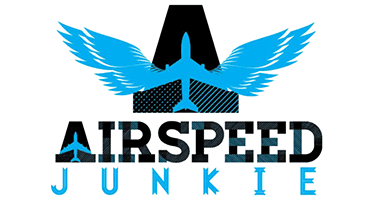Exploring the Rich History of Alaska Airlines
Last updated: January 7, 2026
Alaska Airlines, founded as McGee Airways in 1932, has a rich and transformative history of Alaska Airlines in aviation. Over the decades, it has grown through key mergers, survived financial downturns, and embraced innovations. This article charts the major milestones from its early days to becoming one of America’s prominent airlines.
Key Takeaways
-
Alaska Airlines, founded in 1932 as McGee Airways, underwent significant transformations through mergers and name changes, eventually adopting its current name in 1944.
-
The airline navigated various challenges, including financial crises in the 1970s and increased competition post-deregulation, leading to strategic expansions and operational improvements.
-
Recent initiatives focus on strategic acquisitions, fleet modernization, and a commitment to safety and innovation, exemplified by the proposed acquisition of Hawaiian Airlines and the addition of Boeing 737-9 MAX aircraft.
The Founding Years (1932–1945)

The story of Alaska Airlines begins in 1932 with the establishment of McGee Airways by Harvey Barnhill and Linious “Mac” McGee. Initially operating as Barnhill & McGee Airways, the company faced significant financial struggles during the Great Depression, a period marked by too many airlines in Anchorage and insufficient demand. Despite these early challenges, the foundation for what would become a major player in the airline industry was laid.
In 1935, a critical merger occurred when McGee Airways’ assets were sold to Star Air Service, which had begun commercial operations in 1933. This merger marked a significant step in the consolidation and growth of airline services in the region. The company continued to evolve, reflecting the dynamic nature of the airline industry at the time.
In 1944, following a series of mergers and regulatory changes, the company formally adopted the name Alaska Airlines. This period also saw the airline operating under the name Alaska Star Airlines in 1942, marking its evolution from its early days as McGee Airways. These foundational years set the stage for the post-war expansion that would follow.
Post-War Expansion (1945–1959)
The post-war era was a time of significant growth and innovation for Alaska Airlines. During World War II, the airline used surplus military aircraft for charter operations, a crucial step in maintaining and expanding its services. This period of using military aircraft not only kept the airline afloat but also prepared it for the commercial boom that would follow the war.
A significant milestone during this period was introducing the Douglas DC-6, the airline’s first pressurized plane. This advancement marked a leap in passenger comfort and operational capability, allowing Alaska Airlines to offer a more appealing and competitive service.
Leadership was instrumental in this era of expansion. In 1947, James Wooten became president of Alaska Airlines, guiding the airline through a crucial growth period. Under his guidance, the airline participated in Operation Magic Carpet, airlifting 49,000 Yemenite Jews to Israel, demonstrating its capabilities and commitment.
Charles Willis Jr.’s leadership saw innovations in passenger experience. Alaska Airlines became one of the first airlines to introduce inflight movies, significantly enhancing the travel experience for passengers. These post-war years were marked by strategic decisions and innovations that set the stage for the airline’s future growth.
Financial Challenges and Recovery (1970s)
The 1970s were a tumultuous period for Alaska Airlines, marked by severe financial challenges. In 1972, a financial crisis prompted a significant management change. Ronald Cosgrave succeeded Charles Willis as president and Alaska Airlines CEO, initiating a turnaround strategy that focused on improving customer service and on-time performance.
Cosgrave’s leadership brought about operational changes, including cutting many flights and employees and dropping their cargo business to stabilize cordova airlines financially. These tough decisions were essential to address the airline’s financial difficulties.
In 1973, the airline returned to profitability for the first time in several years. This recovery period was critical in setting the foundation for the future, as Alaska Airlines would soon face the challenges and opportunities brought about by airline deregulation.
Deregulation and Growth (1978–1990)
Deregulation brought both challenges and opportunities for Alaska Airlines. Bruce Kennedy became CEO in 1979, just as the Airline Deregulation Act of 1978 was starting to reshape the industry. Alaska Airlines was among the few carriers that endorsed deregulation, anticipating significant growth opportunities.
Post-deregulation, the airline expanded its service network by adding cities such as Palm Springs, Burbank, and Ontario, along with resuming routes to Nome and Kotzebue. This expansion established Alaska Airlines as a competitive player in the newly deregulated market.
However, the airline faced increased operational pressures from competitors, including Northwest Airlines and Western Airlines operating DC-10 jets on the Anchorage-Seattle route. Inflation and other economic factors further impacted the airline’s operations during this period.
The failed acquisition attempt of Wien Air Alaska led to fines for Alaska Airlines due to improper conduct during the negotiations. Despite these challenges, the airline navigated the new landscape as low-cost airlines began to transform the industry in the 1990s.
Embracing New Technologies and Competition (1990s)

The 1990s were a decade of intense competition and technological advancements for Alaska Airlines. During this period, the airline faced numerous operational challenges but adapted by enhancing customer service and emphasizing better value through a new slogan.
In 1994, Alaska Airlines reported a loss of $45 million due to the impacts of competition. However, through strategic cost reductions and operational efficiencies, the airline made a profit of $40 million the following year. This financial turnaround demonstrated the airline’s resilience and adaptability.
A key strategy during this period was a significant leasing plan, acquiring 24 Boeing 737-400s while also implementing cost-cutting measures such as canceling maintenance facilities and deferring aircraft purchases. These decisions helped the airline remain competitive in a challenging market.
Nationwide Expansion (2000s)

The 2000s marked a period of significant expansion for Alaska Airlines, both in terms of its reach and its fleet. During this decade, the airline expanded its service to major cities like Boston, Chicago, and Miami on the east coast, as well as introducing services to the Hawaiian Islands. This expansion allowed Alaska Airlines to better serve the growing demand for air travel across the continental United States.
In 2001, the airline launched new services to Washington D.C., further extending its reach. Additionally, the transition to an all-Boeing 737 fleet enhanced fuel efficiency and operational effectiveness. By the end of the 1980s, Alaska Airlines had expanded its reach, serving 30 cities across six states outside of Alaska.
This expansion period also focused on improving the overall passenger experience. Introducing new services and modernizing the fleet allowed the airline to offer more competitive and appealing travel options. Alaska Airlines’ growth during this period was a strategic move to position itself as a major airline in the United States.
Strategic Acquisition Moves
Strategic acquisitions have been vital to Alaska Airlines’ growth and competitive positioning. One of the most significant acquisitions was the purchase of Virgin America on December 14, 2016. This acquisition expanded Alaska Airlines’ presence on the West Coast and enhanced its service offerings.
In December 2023, Alaska Airlines proposed to acquire Hawaiian Airlines for $1.9 billion, while also assuming $900 million of Hawaiian’s debt. This proposed merger aims to allow both airlines to operate independently while sharing their operational platforms, creating synergies that benefit both companies.
Hawaiian Airlines’ shareholders voted in favor of the merger on February 16, 2024, but the merger must still receive approval from U.S. regulators, who have expressed caution regarding airline consolidations. These strategic moves aim to strengthen Alaska Airlines’ market position and expand its operational capabilities.
Codeshare Agreements and Fleet Modernization

Alaska Airlines has continuously modernized its fleet and established codeshare agreements to enhance its service offerings. The airline’s fleet primarily consists of Boeing 737 series and Embraer 175 jets, supporting a diverse range of regional operations. The addition of 13 Boeing 737-9 MAX aircraft is a significant step in improving fuel efficiency and expanding route capabilities.
These new aircraft will enable Alaska Airlines to fly 600 miles further than the Airbus A320 they replace, allowing for more direct and efficient routes. The modernization efforts include enhancing the passenger experience with First Class and Premium Class options, offering priority boarding, complimentary beverages, and food for purchase.
These modernization and codeshare efforts aim to improve sustainability and reduce environmental impact while enhancing the customer experience through various seating classes.
Commitment to Safety and Innovation

Safety and innovation have always been central to Alaska Airlines’ operations. Despite experiencing a total of 226 deaths resulting from its accidents, the airline has maintained a strong commitment to safety. The airline has also had two accidents that resulted in aircraft being written off but without any fatalities.
Alaska Airlines’ core values include owning safety, performing ethically, and being remarkable in service delivery. The airline emphasizes accountability and integrity in its operations to ensure safety and service excellence. These values have guided the airline through its history and continue to shape its future.
Summary
The rich history of Alaska Airlines is a testament to its resilience, innovation, and commitment to excellence. From its humble beginnings during the Great Depression to becoming a major airline in the United States, Alaska Airlines has navigated numerous challenges and embraced countless opportunities. The airline’s strategic expansions, technological advancements, and unwavering commitment to safety have cemented its place in the aviation industry. As Alaska Airlines continues to grow and evolve, it remains dedicated to providing exceptional service and innovative solutions for its passengers.
Frequently Asked Questions
When was Alaska Airlines established?
Alaska Airlines was established in 1932 as McGee Airways by Harvey Barnhill and Linious "Mac" McGee.
What was a significant milestone for Alaska Airlines in the post-war era?
A significant milestone for Alaska Airlines in the post-war era was the introduction of the Douglas DC-6, its first pressurized plane, enhancing passenger comfort and operational efficiency.
How did Alaska Airlines overcome its financial challenges in the 1970s?
Alaska Airlines overcame its financial challenges in the 1970s by implementing a turnaround strategy under Ronald Cosgrave's leadership, emphasizing improved customer service and on-time performance, resulting in profitability by 1973.
What was the impact of the Airline Deregulation Act of 1978 on Alaska Airlines?
The Airline Deregulation Act of 1978 had a positive impact on Alaska Airlines, enabling it to significantly expand its service network by incorporating new destinations like Palm Springs, Burbank, and Ontario. This expansion contributed to the airline's growth and competitiveness in the market.
What are some of the features of Alaska Airlines' modern fleet?
Alaska Airlines' modern fleet features Boeing 737-9 MAX aircraft, known for their fuel efficiency and extended range, alongside First Class and Premium Class options that enhance passenger comfort. This commitment to modernizing their fleet significantly improves the travel experience.







